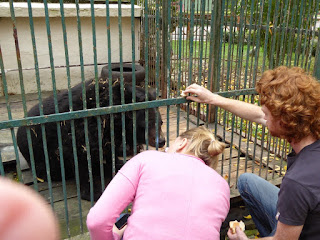This week has seen several articles in the press on the
topic of geriatric animal management in zoos, an issue which our own Heather
Bacon has presented on at a number of international conferences.
Improved zoo
animal husbandry and healthcare is playing a key role in increasing the
longevity of some species
housed in zoos. Attention towards zoo animals is often focussed
on charismatic species, but as veterinarians we have a duty to provide
excellent standards of health care and welfare to a large variety of taxa
including invertebrate, amphibian and reptile species, and this poses unique
professional and ethical challenges. In general there is a contrast between
human medicine where there is considerable effort to prolong life even at a
temporary welfare cost, and veterinary work where the priority of any
intervention is about its immediate welfare impact, both on the individual
animal’s welfare state, and the potential welfare impacts on other members of
the group in social species. Many age-related changes in zoo animals have
parallels in our domestic pets and even in the human population. These chronic
and progressive disease syndromes will often be managed by medical treatments,
specific husbandry changes and close monitoring, to ensure that the individual
animal’s quality of life remains good.
Ensuring good animal
welfare is an essential foundation of the modern zoo, and a primary
responsibility of all veterinary surgeons in the UK. The Five welfare
provisions for zoo animals are set down in the Secretary of State’s standards
of modern zoo practice. Zoos need healthy, stable and reproductively fit
populations with adequate genetic diversity and experiencing good animal
welfare, to make a meaningful and sustainable contribution to conservation of
species in their care, and also to ensure a positive visitor experience. Additionally
veterinary surgeons have a professional and ethical obligation to “make animal welfare their overriding
consideration at all times”. It is important that the zoo community and
veterinary profession continue to work towards meeting the unique challenges
created by geriatric zoo animal management.
Heather examines a
geriatric bear at a zoo in Europe

No comments:
Post a Comment